iRis (Intelligent Risk Information System) - I spent a good decade working of various versions of this web based software solution.
Good times!

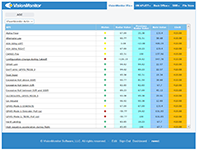
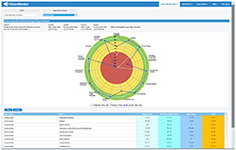
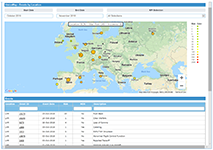
Click Image to View Larger Size
VisionMonitor Software made the decision to move into the aviation industry and provide risk management solutions to their safety departments. To design a viable product, I engaged with client interviews, evaluating requirements, crafting prototypes, presenting concepts, and guiding the solution development using the existing VisionMonitor technology framework. Ultimately I was charged with building this new business area for the company.
Following is very brief description of the process I used during this solution development.
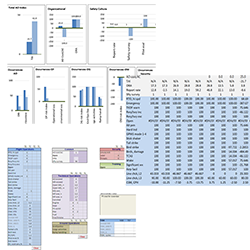
In my work with VisionMonitor Software, we had developed a data collection and processing system configured as a data repository. We sold this as a solution primarily to the energy market for environmental performance monitoring. We discovered a potential new market opportunity in commercial aviation in the EU due to the specifics of the regulatory requirements there. I engaged in initial research, analysis, and client interviews to determine if a potential solution was feasible..
We identified a target client who wanted more real-time proactive monitoring of the Safety Management System (SMS). The safety group at the organization was entering data on spreadsheets from a variety of different sources to create safety KPIs. They had identified a fixed set of KPIs, and when the data was finally analyzed, the information was several months old and had changed from the original entries. This proved problematic when trying to identify current risks to their operations. So this was when the client engagement and interviews began.

After reviewing the spreadsheets currently in use, I scheduled on site visits with the people tasked with gathering a processing the data. We talked about their process, where the data came from, and what they hoped to achieve with the KPIs.
I learned that the data gathering process was very time consuming and tedious. The information had to be manually collected from several systems and transferred onto the spreadsheets. There were multiple people involved which increased the chance of transcription errors as well as the time it took to provide the final output.
In addition, I discovered these individuals had a real passion for their job and were committed to aviation safety. The interviews and discussions really helped me to:
- Empathize with the weight of their responsibilities
- Understand their needs
- Discover pain points in the current process
- Determine success metrics for the potential solution
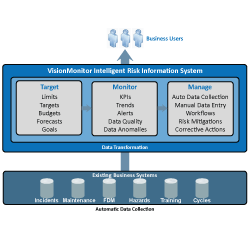
From the client interviews, I was able to collect information that allowed a more complete understanding of the problem. From there the information had to be studied, grouped and organized in a logical fashion.
My team and I analyzed the information collected to determine the scope and structure. The information was organized hierarchically in several categories:
- The sources of raw data used to populate the spreadsheet
- How the raw data points were mathematically transformed
- Operational areas being measured
- High to low level reporting needs
- User access and security
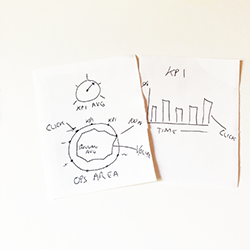
When we completed the information organization and analysis, I presented several concepts to the users and stakeholders of the project. Upon gathering feedback we worked through some low-res prototypes first on paper, then some medium-res prototypes rendered in the browser. This allowed the users to get a feel for how a potential solution would come together, and we were able to readily sort out issues during a few protype iterations.
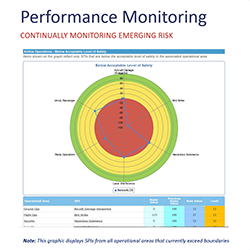
When the stakeholders agreed that the prototype was acceptable, we began to configure the first phase of the solution. I like to do this in an agile fashion and iterate through various areas of functionality. This allows key users and stakeholders to review and comment as the solution is being designed, so if we need to pivot in some way, it can be accomplished during development.
We released the initial solution and received wide acceptance from the client stakeholders. By automatically collecting and processing data from the individual sources, we were able to reduce the user workload, increase KPI accuracy, and provide a real-time pulse on the safety operations of the organization. In addition, we designed the solution in such a way that it could be re-used at other locations with a unique configuration as needed by each client. This was very beneficial to our company as well and opened up a new market space for us!
Key take-aways from this project:
- Empathizing with the client and understanding their needs up front was key
- We found a way to collect the required data in real-time so that the KPIs were always current and correct
- Displaying high level graphics with drill down to detail worked well in the prototypes and the initial rollout (More filter criteria was introduced over time)
- Our company business goals were met as we developed a configurable solution that could be marketed to other aviation clients and evolved with additional functionality over time
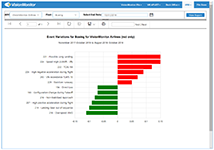
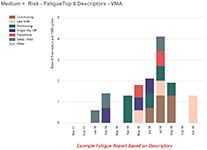

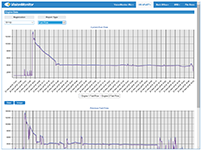
Click Image to View Larger Size
After the initial solution was developed, we began to market it to other aviation companies operating both fixed wing and rotary wing aircraft. Although the initial solution was designed for a commercial airline, we found it worked well in helicopter operations as well. The key was the solution development provided a configurable architecture to meet the requirements of each individual organization.
With the early versions of the product, configuration required quite a lot of involvement from our implementation staff. Over time, we added more features for administration that allowed client configuration of KPIs, limits, taxonomy mapping, operational groups, and more. In addition, we integrated with various web services, APIs, and other sources to consume external information.
For me, this represents several years of solution design, multiple iterations, product management, product evolution, client relationship building, technology advancement, product promotion, and a lot of fun!